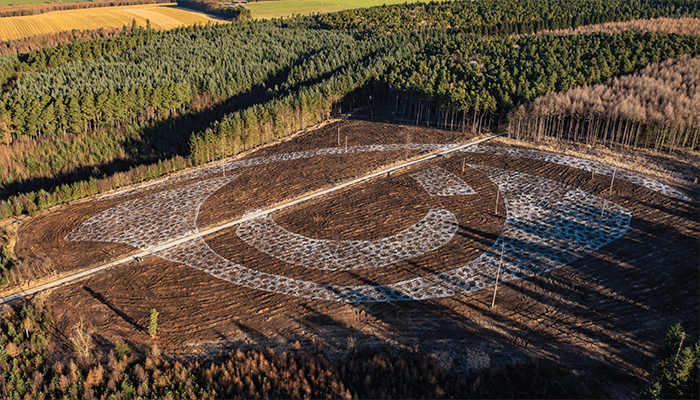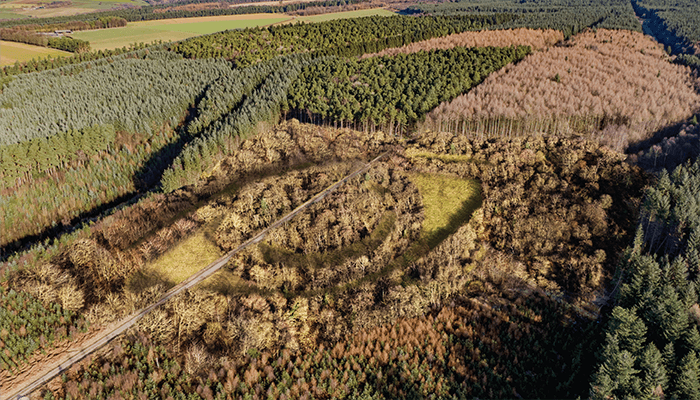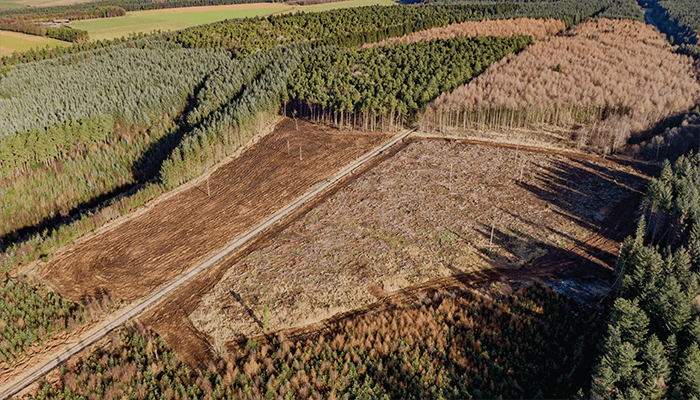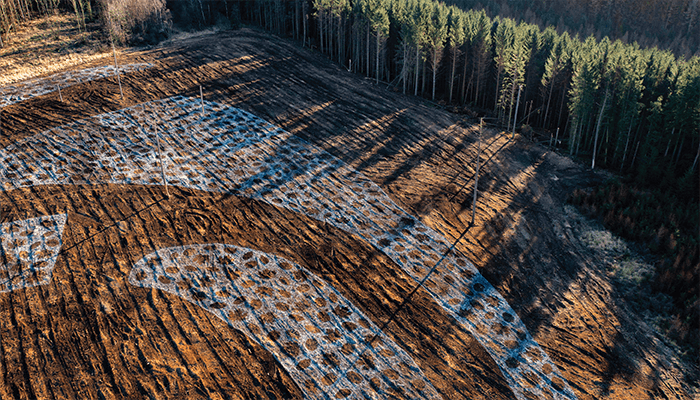


 Forestry England/Crown copyright or Sand In Your Eye
Forestry England/Crown copyright or Sand In Your Eye
Our climate is changing drastically, with an increasing frequency of extreme weather causing everything from property damage to death; there is clearly a strong need for action now. Increasing conversation and action on climate change is key to achieving real world results, and Forestry England and Sand in Your Eye have come together for a joint project that is designed to do exactly that (1).
The Forest Eye is an amazing 5,000-tree planting in the shape of an eye, located in the heart of Yorkshire, UK, in the Dalby Forest. The Forest Eye was planted by children with the aim of highlighting how important children and their ideas are for creating a healthy environment in the future.
As the trees grow, The Forest Eye will spark conservation conversation, with children in particular being encouraged to share their ideas – many of those were already shared during the planting process! The trees will become visible from the air in around six years’ time, and will represent the gaze of a child as a powerful symbol of how we should be actively responding to both the vision and the needs of generations yet to come of age.
In addition to encouraging conversation on climate change, The Forest Eye will also be serving an important role in the fight against our current climate catastrophe. Not only will it create a habitat for wildlife and produce oxygen, it will also serve to absorb carbon dioxide from the atmosphere, directly combating climate change.
If you are an ophthalmologist who is keen on sustainability in your profession, please get in touch! We would love to hear what you are doing to improve the sustainability within ophthalmology. Let us know on edit@theophthalmologist.com.
References
- Forestry England, “Forest Eye,” (2022). Available at: https://www.forestryengland.uk/forest-eye.
